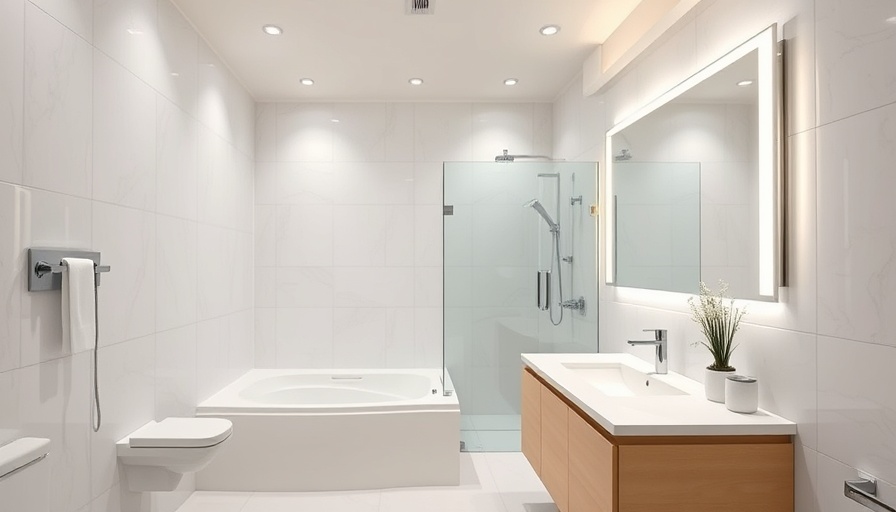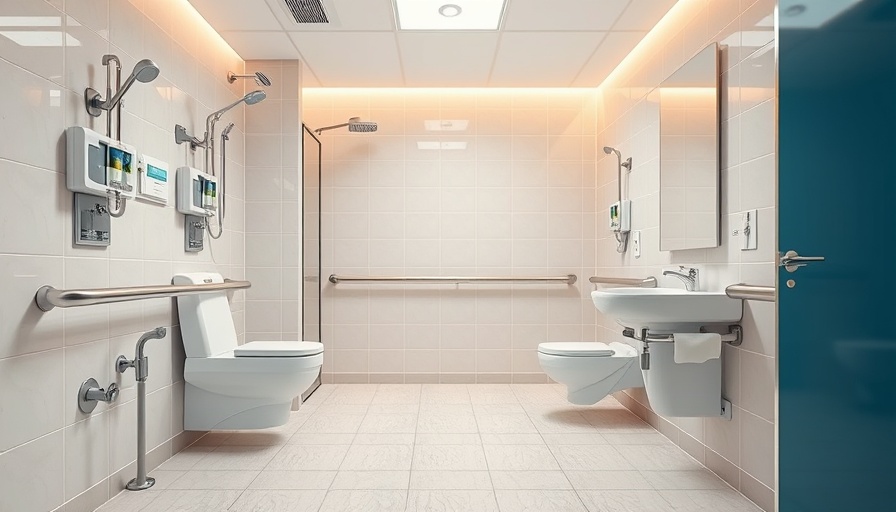
Why Bathroom Lighting Matters for Seniors
As we age, practicality becomes a key concern, especially in our homes. The bathroom, often overlooked, can greatly influence safety and comfort for seniors. With statistics indicating falls as a leading cause of injury among older adults—particularly in bathrooms where improper lighting can create hazardous conditions—it becomes clear that effective lighting is not just a matter of preference but a necessity.
The right lighting does more than illuminate. It enhances daily living experiences, allowing seniors to navigate their spaces confidently and independently. Imagine a bathroom that feels inviting rather than intimidating—a space where the correct balance of light fosters both comfort and safety.
Understanding the Unique Needs of Aging Eyes
Aging brings about various changes, particularly affecting vision. Seniors often experience decreased contrast sensitivity, making it challenging to distinguish objects and navigate familiar environments. Proper lighting can significantly alleviate these challenges. A well-lit bathroom can become a sanctuary, reassuring seniors that they are safe to move about freely.
Statistics show that older adults face a higher risk of falling in poorly illuminated areas. By recognizing the importance of proper visibility, we can better understand the need for thoughtful bathroom designs that accommodate these unique challenges.
Types of Effective Lighting Solutions for Bathrooms
To create a senior-friendly bathroom, it's vital to consider various lighting styles:
- Ambient Lighting: This type of lighting is essential as the primary source of illumination in the bathroom. Ceiling-mounted fixtures and recessed lights that emit a warm hue can promote a calming atmosphere while ensuring ample light.
- Task Lighting: For personalized tasks such as grooming, dedicated task lighting installed around mirrors or sinks can provide the focused light necessary for detailed activities, thus reducing shadows that can obscure visibility.
- Accent Lighting: Subtle night lights can illuminate pathways and highlight potential hazards, making them ideal for safe navigation during nighttime bathroom visits.
Designing an Inclusive Lighting Layout
Creating a senior-friendly bathroom involves more than just picking fixtures; it requires an intentional approach to a cohesive lighting layout. The ideal design incorporates layers of lighting—ambient, task, and accent—that work harmoniously together. This layered approach not only enhances visibility but also adheres to aesthetic preferences, offering an inviting space for seniors to enjoy.
Additionally, adjustable dimmers can provide customization, allowing seniors to control the intensity of the light. This adaptability is vital for meeting individual comfort levels, contributing to enhancing their well-being.
Innovative Technologies to Enhance Bathroom Safety
In today's tech-savvy world, integrating smart home technologies into bathroom lighting can significantly boost safety. Motion-activated lights can automatically illuminate spaces as seniors enter, reducing the risk of falls in dark areas. Voice-activated systems can also assist those with mobility challenges, allowing them to command lighting without needing to move about unnecessarily.
These technological innovations are not just luxuries—they can genuinely transform the daily lives of seniors, making routine tasks safer and easier.
Creating an Emotional Connection Through Lighting
The impact of well-designed lighting goes far beyond functionality. Creating a calming, safe environment in the bathroom can alleviate stress and anxiety for seniors. The warmth of welcoming lighting can evoke feelings of comfort and familiarity, reducing feelings of isolation that sometimes accompany aging.
Ultimately, thoughtful lighting solutions can foster a sense of control and independence, allowing seniors to retain confidence in their daily routines.
Bridging the Gap for Caregivers and Family
For caregivers and family members, understanding the importance of proper bathroom lighting is key to supporting their elderly loved ones. It's essential to advocate for safe and functional home environments—consider it an act of love. Helping to create well-lit spaces elevates the quality of life for seniors, empowering them to navigate their homes with ease.
In addition, it is valuable to educate oneself on the various products and installation techniques available to enhance senior bathroom safety. A proactive approach can make all the difference in the lives of those whose independence we seek to protect.
Conclusion: Making Safety a Priority in Senior Care
Illuminating the bathroom effectively is an often-overlooked aspect of senior care. As highlighted, thoughtful lighting solutions can lead to significant improvements in safety, independence, and quality of life. The time to prioritize this often-neglected detail is now. Let's design bathrooms that facilitate greater well-being for our elderly loved ones. Awareness and action can prevent accidents, ensuring that they remain safe and sound in their homes.
 Add Row
Add Row  Add
Add 




Write A Comment